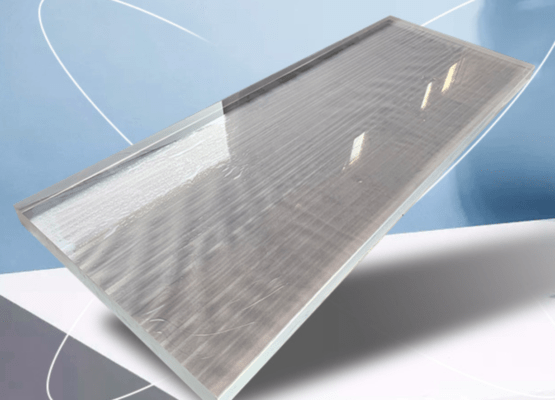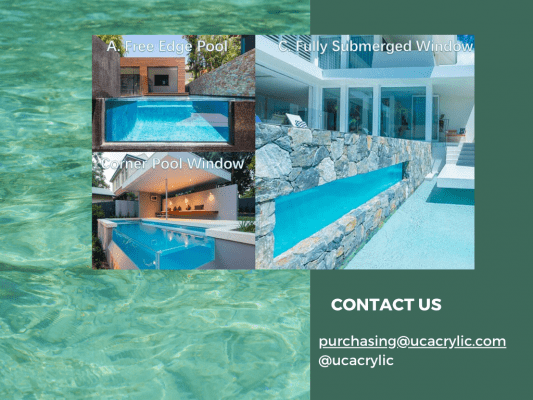Acrylic Panels for Swimming Pools
Polymethyl methacrylate, commonly known as plexiglass or acrylic (abbreviated as PMMA), offers high transparency, affordability, and ease of mechanical processing. As a popular substitute for glass, acrylic panels for swimming pools are widely used in various applications.
Types of Acrylic Panels
Acrylic panels can be categorized based on:
- Transmittance: Pure transparent, colored transparent, and semi-transparent (e.g., color boards).
- Surface Gloss: High-gloss, silk-gloss, and matte (frosted) boards.
- Performance: Ordinary, impact-resistant, UV-resistant, flame-retardant, and high-wear-resistant boards.
Features of Pure Acrylic Sheets
- UV Resistance: Resists yellowing, fading, and cracking for over 10 years outdoors.
- High Transparency: Over 92% light transmittance, with a clear and colorless cross-section.
- Durability: Surface hardness comparable to aluminum and brass, with excellent anti-cracking and chemical resistance.
- Protection: High-quality protective film ensures long-lasting performance.
Applications of Acrylic in Swimming Pools
Ordinary acrylic swimming pools use resin fiber and advanced technology to create seamless, one-piece structures. These pools feature smooth surfaces, lightweight construction, and excellent heat retention, antibacterial, anti-aging, and anti-corrosion properties. They are ideal for hospitals and fixed-scale swimming pools.
For more information on acrylic swimming pools, visit UC Acrylic Projects.
Acrylic Material Sources
Acrylic materials come in three categories:
- Pure Imported Acrylic Sheets: High quality, longer lifespan.
- Domestic Acrylic Sheets: Cost-effective, moderate lifespan.
- Recycled Acrylic Sheets: Affordable, shorter lifespan.
Design, Construction, and Installation of Acrylic Swimming Pools
Here’s an overview of the process:
- Design: Plan the pool layout and specifications.
- Transportation: Deliver acrylic sheets to the site by car.
- Waterproof Construction: Use U-shaped notches for steel structure side panels.
- Hoisting: Use a herringbone mast and hoist to lift acrylic panels into place.
- Injection Slot: Create a simple gantry, hoist the acrylic, and lower it into the installation slot.
- Glue Filling: Fill gaps with non-shrinking cement and soft materials to accommodate thermal expansion.
- Protection: Package and inspect the installed acrylic to prevent scratches.
- Completion: Finalize installation and ensure quality checks.
For more details on acrylic swimming pool projects, visit UC Acrylic Projects.
Why Choose Acrylic for Swimming Pools?
Acrylic panels offer:
- Flexibility: Manufacturers can mold acrylic into various shapes and sizes.
- Durability: Resistant to impact, UV rays, and chemicals.
- Aesthetic Appeal: High transparency and smooth finishes enhance visual appeal.
Conclusion: Transform Your Pool with Acrylic
Acrylic panels are revolutionizing the design and construction of swimming pools, offering unmatched durability, clarity, and versatility. Whether for residential or commercial use, acrylic ensures a stunning and long-lasting pool experience.



